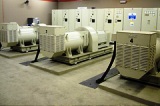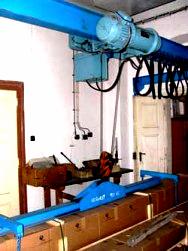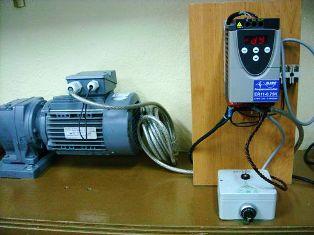Indicators for regulating the speed of electric drives
 Speed regulation is a forced change in engine speed in order to control the speed of movement of the executive bodies of machines and mechanisms. In general, motor speed control—and that also means keeping the speed at a given level—can be done in two ways—parametric and in closed systems.
Speed regulation is a forced change in engine speed in order to control the speed of movement of the executive bodies of machines and mechanisms. In general, motor speed control—and that also means keeping the speed at a given level—can be done in two ways—parametric and in closed systems.
In parametric In this way, regulation is achieved by changing any parameters of the electric circuits of the motors or the supply voltage by including, for example, various additional elements: resistors, capacitors, inductors. The quality of this speed control is usually not very good.
If it is necessary to obtain a speed control process with high performance, they go to closed electric drive systems, where the action on the motor is usually carried out by changing the voltage supplied to the motor, or the frequency of this voltage, or both . Different DC and AC converters are used for this purpose.
Speed control is quantitatively characterized by six key metrics.
 1. The adjustment range is determined by the ratio of the maximum ωmax and minimum speeds ωmin: D = ωmax / ωmin at the given limits of change of the motor shaft load.
1. The adjustment range is determined by the ratio of the maximum ωmax and minimum speeds ωmin: D = ωmax / ωmin at the given limits of change of the motor shaft load.
Different working machines require different control ranges. Thus, rolling machines are characterized by the range D = 20 — 50, metal cutting machines from D = 3 — 4 to D = 50 — 1000 and more, paper machines D = 20, etc.
2. The direction of speed regulation is determined by the location of the resulting artificial features relative to the natural ones. If they are located above the natural, then they talk about adjusting the speed up from the main one, if lower - down from the main one. The arrangement of artificial features, both above and below the natural one, ensures the so-called two-zone regulation.
3. Smooth speed control is determined by the number of artificial characteristics obtained in a given range: the more there are, the smoother the speed control will be. The smoothness is evaluated by the coefficient, which is found as a ratio of the speeds on the two closest characteristics
kpl = ωi — ωi-1,
where ωi and ωi-1 — included speed i-th and (i-1) artificial characteristics.
The greatest smoothness is achieved in closed systems using voltage and frequency converters, low smoothness usually corresponds to parametric control methods. With smooth speed control, the technological process proceeds qualitatively, the quality of products improves, the performance of the electric drive increases, etc.
4.Stability when maintaining a set control speed, the technologist depends on the rigidity of the mechanical characteristics of the electric motor. A more rigid mechanical characteristic can only be obtained with closed electric drives. With an open electric drive and at too low a speed and fluctuations in the moment of resistance, large fluctuations in speed will occur, which is unacceptable.
5. Permissible motor load during speed regulation depends on the current flowing in the power section. This current must not exceed the rated value. Otherwise, the engine will overheat. The allowable current depends on the type of mechanical characteristics of the end element and the applied speed control method.
6. Economic regulation is determined by capital and operating costs for adjustable electric drive… Capital costs should be as minimal as possible or otherwise so that the payback period of the electric drive does not exceed the standard.
When calculating the speed control efficiency index, the number of adjustable speeds in the control range, the active powers of the motor shaft at different speeds, the power losses at different speeds, the operating time of the electric motor at each controlled speed, active and reactive the powers consumed by the electric motor are taken into account.

